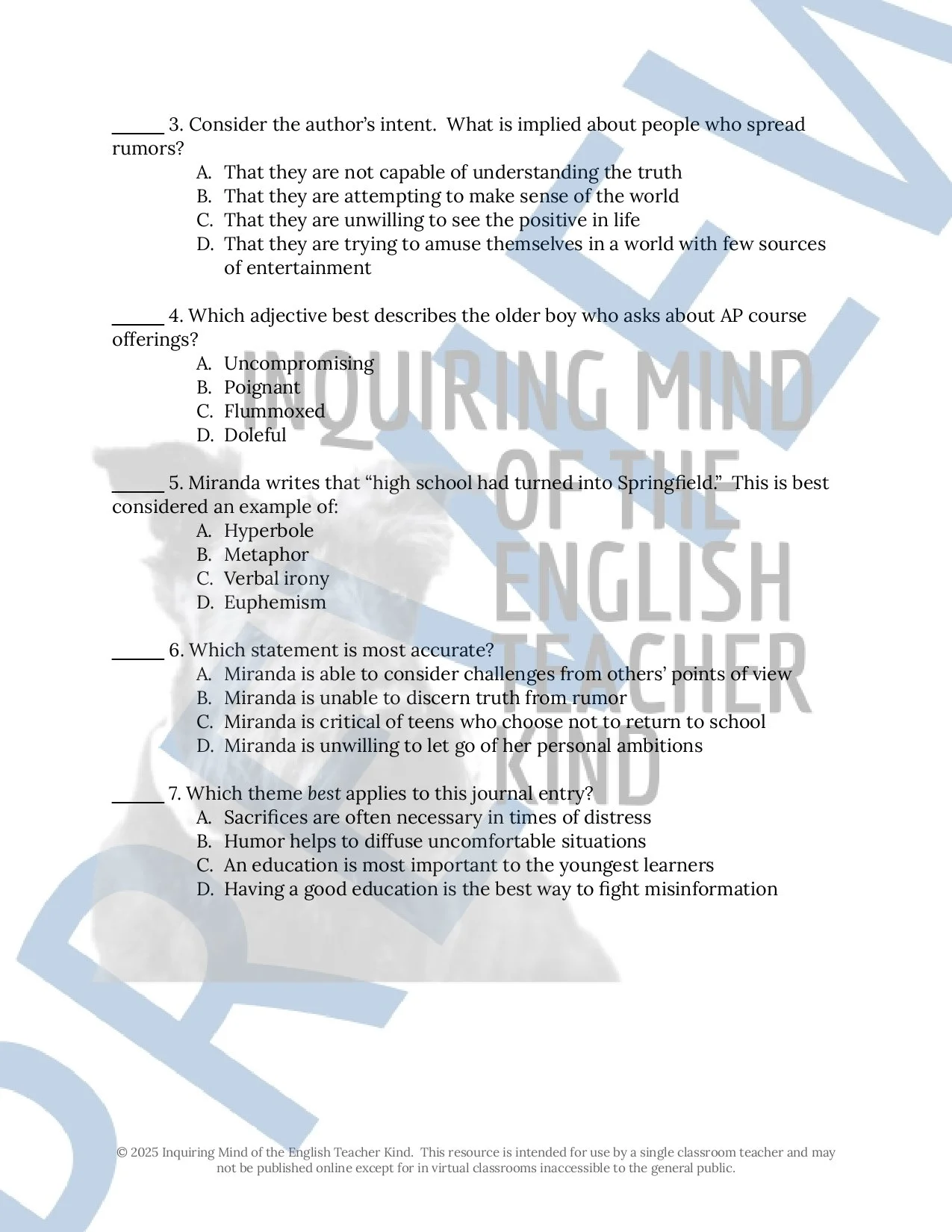 Image 1 of 13
Image 1 of 13

 Image 2 of 13
Image 2 of 13

 Image 3 of 13
Image 3 of 13

 Image 4 of 13
Image 4 of 13

 Image 5 of 13
Image 5 of 13

 Image 6 of 13
Image 6 of 13

 Image 7 of 13
Image 7 of 13

 Image 8 of 13
Image 8 of 13

 Image 9 of 13
Image 9 of 13

 Image 10 of 13
Image 10 of 13

 Image 11 of 13
Image 11 of 13

 Image 12 of 13
Image 12 of 13

 Image 13 of 13
Image 13 of 13














Halloween Research Project and Speech Materials for High School ELA
Complement a unit on Gothic fiction and embrace the harvest season with this low-prep, standards-based research project addressing 33 topics directly and indirectly related to Halloween: ancient celebrations, holidays, and practices (Samhain, Lemuria, guising, souling, and more); more recent traditions (Guy Fawkes Night, the history of trick-or-treating, and the history of pumpkin carving); myths, legends, and superstitions (Jack O'Lantern, the Beast of Bray Road, Mothman, and more); medical conditions ("werewolf syndrome," "walking corpse syndrome," and "vampire disease"); historical figures (Vlad the Impaler, John Hathorne, Sarah Good, and more); and Halloween-inspired authors (Ray Bradbury, Edgar Allan Poe, Mary Shelley, H.P. Lovecraft, and more). Supporting materials—including a detailed scoring rubric—are provided. Materials are delivered in Word Document and PDF formats. (Alternatively, a Google Drive option is available.)
Ultimately, students will perform the following tasks:
Collect and classify reliable sources on an assigned topic
Develop successful methods of recording information
Evaluate the credibility of nonfiction texts, taking into consideration readability, date, relevance, expertise, and bias
Apply conventions of MLA formatting
Correctly site resources to avoid plagiarism
Organize information in a cohesive manner, using a note-taking system that includes summary, paraphrasing, and quoted material
Analyze, synthesize, and integrate information, generating a thoughtfully comprehensive report, free of generalities and redundancies
Present information in a formal, coherent manner
Materials are available for teaching during the Halloween season:
Creative Writing Unit Plan for Gothic Fiction - Google and printable
The Works of Edgar Allan Poe (Volume 1) - Google and printable
The Works of Edgar Allan Poe (Volume 2) - Google and printable
The Works of H.P. Lovecraft (Volume 1) - Google and printable
The Works of H.P. Lovecraft (Volume 2) - Google and printable
Complement a unit on Gothic fiction and embrace the harvest season with this low-prep, standards-based research project addressing 33 topics directly and indirectly related to Halloween: ancient celebrations, holidays, and practices (Samhain, Lemuria, guising, souling, and more); more recent traditions (Guy Fawkes Night, the history of trick-or-treating, and the history of pumpkin carving); myths, legends, and superstitions (Jack O'Lantern, the Beast of Bray Road, Mothman, and more); medical conditions ("werewolf syndrome," "walking corpse syndrome," and "vampire disease"); historical figures (Vlad the Impaler, John Hathorne, Sarah Good, and more); and Halloween-inspired authors (Ray Bradbury, Edgar Allan Poe, Mary Shelley, H.P. Lovecraft, and more). Supporting materials—including a detailed scoring rubric—are provided. Materials are delivered in Word Document and PDF formats. (Alternatively, a Google Drive option is available.)
Ultimately, students will perform the following tasks:
Collect and classify reliable sources on an assigned topic
Develop successful methods of recording information
Evaluate the credibility of nonfiction texts, taking into consideration readability, date, relevance, expertise, and bias
Apply conventions of MLA formatting
Correctly site resources to avoid plagiarism
Organize information in a cohesive manner, using a note-taking system that includes summary, paraphrasing, and quoted material
Analyze, synthesize, and integrate information, generating a thoughtfully comprehensive report, free of generalities and redundancies
Present information in a formal, coherent manner
Materials are available for teaching during the Halloween season:
Creative Writing Unit Plan for Gothic Fiction - Google and printable
The Works of Edgar Allan Poe (Volume 1) - Google and printable
The Works of Edgar Allan Poe (Volume 2) - Google and printable
The Works of H.P. Lovecraft (Volume 1) - Google and printable
The Works of H.P. Lovecraft (Volume 2) - Google and printable
Preview this resource:
Complement a unit on Gothic fiction and embrace the harvest season with this low-prep, standards-based research project addressing 33 topics directly and indirectly related to Halloween: ancient celebrations, holidays, and practices (Samhain, Lemuria, guising, souling, and more); more recent traditions (Guy Fawkes Night, the history of trick-or-treating, and the history of pumpkin carving); myths, legends, and superstitions (Jack O'Lantern, the Beast of Bray Road, Mothman, and more); medical conditions ("werewolf syndrome," "walking corpse syndrome," and "vampire disease"); historical figures (Vlad the Impaler, John Hathorne, Sarah Good, and more); and Halloween-inspired authors (Ray Bradbury, Edgar Allan Poe, Mary Shelley, H.P. Lovecraft, and more). Supporting materials—including a detailed scoring rubric—are provided.






















































































































































